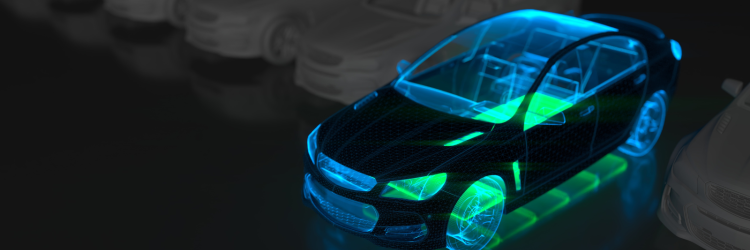When I first read about an accident involving a Cruise robotaxi that happened in San Francisco in early October, it sounded like a bizarre one-off. In fact, now that more details have emerged, it's clear that the accident represents a real challenge to the near future of all autonomous vehicles.
As originally reported, this was the story:
The accident happened in the central business district at about 9:30 pm on Oct. 2 when a driver hit a woman who was crossing Fifth Street, not in a crosswalk. She was thrown into the path of a robotaxi operated by General Motors' Cruise unit, which was in full autonomous mode. The car hit her and then quickly stopped, with the woman trapped under the car. The robotaxi waited for EMTs to show up and take her to a hospital, where she was treated for multiple trauma injuries. (The driver who hit her first never stopped.)
But that turned out not to be the whole story. When a robotaxi encounters a situation it doesn't know how to handle, it generally pulls off to the side of the road and waits for instructions or assistance. That's what this Cruise AV did -- dragging the injured woman 20 feet in the process, while she was trapped under the left rear axle.
Compounding the problem, the California Department of Motor Vehicles says Cruise didn't initially show authorities the full video from the incident. The DMV says Cruise only showed the seconds leading up to the impact and then the robotaxi stopping -- leaving out the video of the car pulling off to the side of the road while the woman was trapped underneath. Cruise says it showed authorities the full video multiple times.
In any case, the investigation into the accident has ramped up tensions between Cruise and city and state authorities, which were already sky high, and could drag in Google's Waymo and other AV companies.
What happens now?
For the moment, Cruise has not only halted its operations in San Francisco, as ordered, but has stopped nationwide -- it was also operating a commercial service in Phoenix and Austin, Texas, and a free form of its service in Dallas, Houston and Miami. Cruise had also announced plans to test its vehicles in Nashville and Seattle, on the way to a broader rollout.
The company has also committed to "examine our processes, systems, and tools and reflect on how we can better operate in a way that will earn public trust.” That will be key.
Cruise had faced opposition from the San Francisco Fire Department, in particular, when it applied to operate a commercial service throughout the city. Robotaxis sometimes have trouble figuring out what to do when facing emergency vehicles and all their flashing lights, and the SFFD said Cruise had interfered with its vehicles many times.
While Cruise won approval from the California Public Utilities Commission in early August, the DMV, just a week later, ordered Cruise to cut by half the number of AVs it was using. The DMV action followed an accident in which a Cruise robotaxi pulled into an intersection after the light turned green and was hit by a fire engine that, with its sirens on, was running the red light. Cruise vehicles had a number of other, well-publicized problems, including one getting stuck in a patch of wet cement after missing signs that warned cars to drive around it. (If you're interested in more details, I wrote about the initial approval here and the curtailing of that approval here.)
Tesla is adding to the PR problems for AVs, as it's in the middle of two trials blaming it for fatal crashes involving drivers using its Autopilot system. In my opinion, Elon Musk has been irresponsible in extolling the capabilities of what, as his lawyers are now arguing in court, really amounts to advanced cruise control and not anything close to full self-driving. Tesla won a major case in 2019 in which the company argued that any crashes are the fault of the drivers, who've been warned that they need to stay attentive and be prepared to take control of the car. But even if Tesla wins these two latest cases, the AV movement still takes a hit, because the company will have won by highlighting the limits of Tesla's technology.
So far, Google's Waymo seems to have the best safety record, but that only partly insulates it from Cruise's and Tesla's problems. Reilly Brennan, a partner at Trucks Venture Capital, who writes an influential newsletter on innovation in vehicles, says the AV world suffers from what he calls the WALTER syndrome -- companies Win Alone but Lose Together. In other words, Waymo only gets credit for its own success stories but gets pulled down by anyone's failures.
Waymo could take advantage of Cruise's pause to grab market share, although we're early enough in the move to autonomous vehicles that I doubt it can do permanent damage to Cruise, unless the forced hiatus drags on for many months.
More broadly, I think (and hope) the effect of Cruise's temporary shutdown will be to drive AV companies toward more transparency and to push regulators to standardize how they measure safety. At the moment, AV companies are required to report accidents but are allowed to be rather idiosyncratic about how they do so. They should be reporting even more data than they do now and in a format that makes it possible for regulators -- and the rest of us -- to compare and see which operator is the safest.
I'll still flag down a robotaxi the next time I'm in San Francisco, even if it's a Cruise, but, then, I'm always technology-curious. Operators and regulators need to up their game if they are going to reach the broader market any time soon.
Cheers,
Paul


